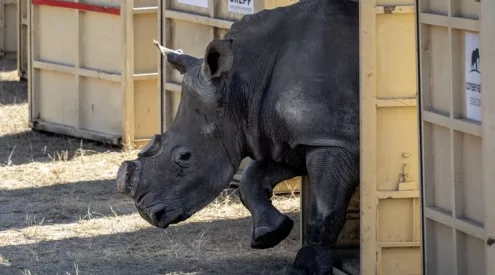One cannot listen to African myths without stumbling across tales that recognise trees as symbols of the link between the spiritual world and the living. Being deciduous, they show their power to live and die. Ever the symbol of maternity, they protect and provide food and shelter. In many stories, trees are portrayed as an ancestral symbol of wisdom, authority and custom.
Indeed, trees play important roles in all facets of life for people in Africa. In West Africa, for example, the Oubangui tribe plants a tree to celebrate the birth of a child. The child’s development is linked to the growth of the tree: if it grows slowly, people fear for the health of the child and a healer is called; if the child is sick, it’s brought to the tree for treatment. When the tree begins to bear fruit, the time will have come for the child to marry and when they die, the belief is that their spirit goes to reside in the tree.
Closer to home, there are also stories surrounding Southern Africa’s buffalo thorn (Ziziphus mucronata). It’s customary in some rural areas to plant this tree on the grave of a Zulu chief as a reminder of where the chief rested, hence the name umLahlankosi, meaning ‘that which buries the chief’. A twig from the tree can be used to carry the spirit of the deceased from the place of death to a new resting place and a branch is dragged around a village to protect it from evil spirits.
Entering a new year, it seems fitting to stand still under the shade of this tree and contemplate what it symbolises. You could say it represents life: the young twigs zigzag in the same way that life isn’t always straightforward. The two thorns at the nodes are also significant: one facing backwards representing where we come from and one facing forward, representing where we are going. The thorns are also the origin of its Afrikaans name, wag-’n-bietjie. Even though the thorns are small, they’re vicious and all those who have come into contact with them will know that you have to ‘wait a bit’ to free yourself from them.
They’re easy to find in southern Kruger’s Sabie/Crocodile thorn thickets. From January to August, look for brown, berry-like fruit which is eaten by various bird species (grazers such as giraffe and impala are fond of the leaves). Their inconspicuous flowers produce abundant nectar for insects.
The buffalo thorn is also useful to humans and a decoction (a medicinal concentration) of the roots can act as a painkiller, while a mixture of bark and leaves is used for respiratory problems and septic swellings, including swollen glands. There is even a beauty benefit: infuse your bath with the bark and the steam will purify and improve your complexion.
Sources:
- www.fao.org and www.trees.co.za.
- SAPPI What’s in a name? by Dr Hugh Glen (Jacana, 2004).
- SAPPI Tree spotting: Lowveld by Rina Grant and Val Thomas (Jacana, 2006).
Photo from Public domain


















